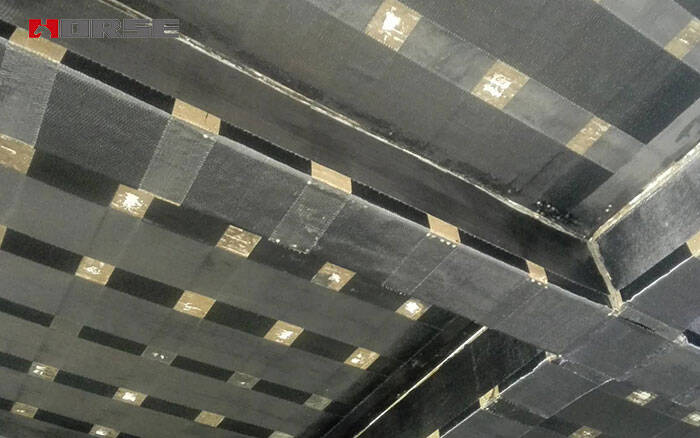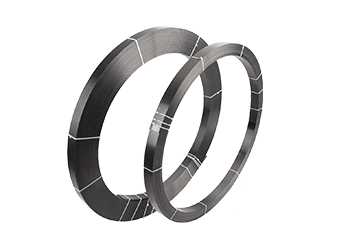Soluciones
La gama de negocios de construcción de caballos se extiende a todo el mundo y sirve a miles de clientes con productos, orientación técnica especializada en construcción, y somos testigos del reinicio de la marca china con ellos.
El mecanismo de refuerzo de los plásticos reforzados con fibra de carbono para el refuerzo por tracción es similar al de las placas de acero Unidas. En otras palabras, la tela de fibra de carbono se utiliza para fortalecer las barras de acero tensas para mejorar la capacidad de carga de los componentes.

El mecanismo de refuerzo de los plásticos reforzados con fibra de carbono para el refuerzo por tracción es similar al de las placas de acero Unidas. En otras palabras, el plástico reforzado con fibra de carbono se utiliza para fortalecer las barras de acero tensas para mejorar la capacidad de carga de los componentes. Las pruebas de tracción de los plásticos reforzados con fibra de carbono (cfrp) Unidos al Fondo de la placa han demostrado que la capacidad máxima de carga de la placa reforzada ha aumentado significativamente, y CFRP ha desempeñado un papel más importante en la etapa posterior de la carga, especialmente después del rendimiento de la barra de acero. Cuando la placa de hormigón armado se estira, el aceite de pescado del componente se daña debido al estiramiento y flexión de la fuerza de expansión longitudinal con un valor límite muy pequeño. Si se pueden crear restricciones horizontales en la parte inferior del componente para organizar la expansión longitudinal del componente tensado, mejorando así la resistencia a la tracción y la capacidad de deformación del componente.
El hormigón de fibra de carbono (cfs) se utiliza para fortalecer las placas de hormigón armado, que es una restricción entre las placas de hormigón y la zona de Resistencia cfs. (la fuerza de interacción entre ellos se convierte en un esfuerzo de restricción de interfaz). Debido a los graves daños causados por las restricciones de la interfaz longitudinal, el hormigón central de la zona plástica se encuentra en un Estado de tensión tridimensional. En comparación con la carga unidireccional, la tensión máxima de tracción y la capacidad de carga del hormigón aumentarán, y la placa de hormigón armado reforzada tendrá una mayor deformación dúplex y capacidad de consumo de energía.
Debido a que la restricción del CFS sobre la placa de hormigón armado es una restricción de interfaz, el CFS solo producirá tensión de restricción en el hormigón cuando el hormigón se expanda hacia afuera y lateralmente (deformación plástica). Por lo tanto, la viga cerrada CFS muestra dos etapas del proceso de carga. En la primera fase, el esfuerzo de tracción longitudinal del hormigón es menor, la deformación lateral es menor y la fuerza CFS es menor. En la segunda fase, con el aumento de la carga, la deformación del hormigón de la placa aumenta, el esfuerzo lateral del CFS aumenta significativamente y la fuerza vinculante lateral aumenta rápidamente hasta que el CFS alcanza la tensión de tracción límite y se rompe.
Los materiales de refuerzo de fibra de carbono utilizados para el refuerzo de estructuras de construcción tienen excelentes propiedades mecánicas, como excelente resistencia a la corrosión, construcción simple, buena permeabilidad y uniformidad, y su resistencia a la tracción es aproximadamente 10 veces mayor que la del acero ordinario. Sin embargo, después de tejer el material de fibra de carbono en tela de fibra de carbono, la fibra de carbono es difícil de trabajar juntos. Cuando la carga es baja, Algunas fibras de carbono con niveles de estrés más altos primero alcanzan la resistencia a la tracción y se retiran del Estado de trabajo. De esta manera, las fibras de carbono se descomponen gradualmente hasta que todo el cuerpo se rompe, lo que mejora la capacidad de carga de los componentes. Después de usar el adhesivo, las fibras de carbono se pueden combinar bien, lo que mejora en gran medida la resistencia a la tracción de las fibras de carbono. Por lo tanto, el refuerzo del CFRP primero debe permitir que el CFRP en el CFRP funcione de manera coordinada, por lo que el adhesivo juega un papel clave en el refuerzo del cfrp. No solo garantiza el trabajo coordinado de todos los filamentos de fibra de carbono, sino que también garantiza el trabajo coordinado de la tela y la estructura de fibra de carbono, logrando así el propósito de refuerzo y reparación.
Cabe señalar que cuando se utiliza refuerzo de fibra de carbono, el número de capas de Unión de hormigón debe determinarse mediante cálculos. Teniendo en cuenta el coeficiente de trabajo de cada capa, la resistencia a la fatiga y la evitación de daños frágiles, la mitad de ellos no debe exceder de cinco capas. Además, desde el punto de vista de las propiedades mecánicas, una sola capa es mejor que varias capas, y la anchura es mejor que la anchura. Si es necesario, la longitud de la vuelta no debe ser inferior a 100 mm. además de los requisitos de cálculo, se deben tomar las medidas estructurales necesarias para garantizar un anclaje confiable en el extremo de la fibra de carbono.
Puede encontrar cualquier cosa que necesite, confíe en probar estos productos y encontrará la gran diferencia después de eso.

Tejido de fibra de carbono unidireccional de alta resistencia para refuerzo de compuesto de polímero reforzado con fibra (FRP).

Impregnación y pasta de componentes reforzados de superficie y productos de fibra.

Lámina de fibra de carbono pultruída para reforzamiento de estructuras